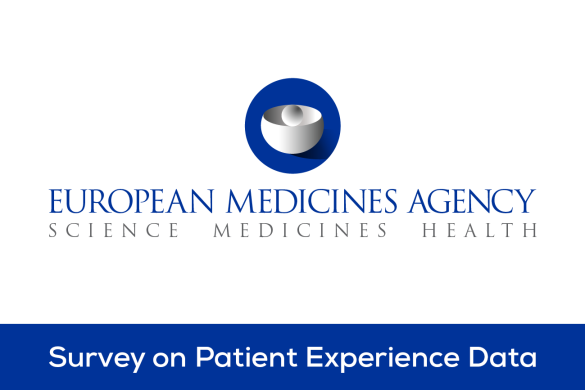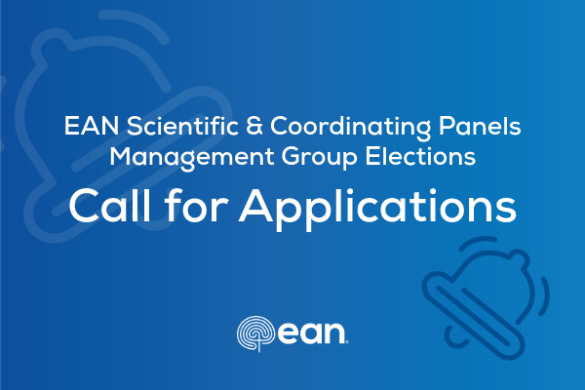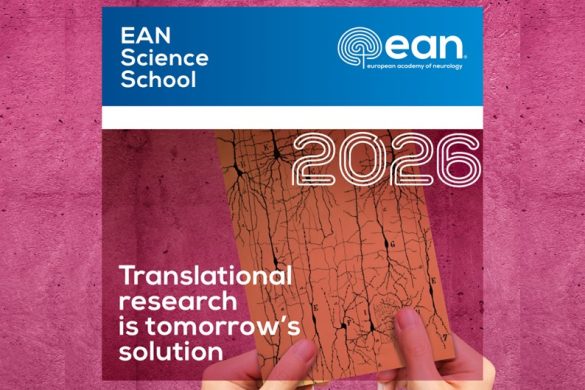Dear Readers,
We invite you to take a moment and read the following article recommendations, prepared for you by our Scientific Panels: Autonomic nervous system disorders , Higher cortical functions, Movement disorders, Sleep-wake disorders.
- Ryvlin P, Nashef L, Lhatoo SD, et al. Incidence and mechanisms of cardiorespiratory arrests in epilepsy monitoring units (MORTEMUS): a retrospective study. Lancel Neurol. 2013; 12 (10): 66-77.
Sudden unexplained death in epilepsy (SUDEP) may account for 8-17% of deaths in patients with epilepsy. The MORTEMUS study by Ryvlin et al. made us aware that SUDEP is associated with centrally mediated severe alterations of cardiac and respiratory functions in the early postictal phase.
- van der Lende M, Surges R, Sander JW, Thijs RD. Cardiac arrhythmias during or after epileptic seizures. J Neurol Neurosurg Psychiatry 2016; 87 (1):69-74.
Postictal arrhythmias were mostly found following convulsive seizures and were associated with postictal generalized EEG suppression and SUDEP. In a systematic review of 1167 papers Prof. Ley Sander (Department of Clinical & Experimental Epilepsy, Institute of Neurology, Queen Square London) and his team identified seven distinct patterns of (post)ictal cardiac arrhythmias: ictal asystole (103 cases), postictal asystole (13 cases), ictal bradycardia (25 cases), ictal atrioventricular (AV)-conduction block (11 cases), postictal AV-conduction block (2 cases), (post)ictal atrial flutter/atrial fibrillation (14 cases) and postictal ventricular fibrillation (3 cases). The contrasting clinical profiles of ictal and postictal arrhythmias suggested different pathomechanisms. In line with the MORTEMUS study, postictal rather than ictal arrhythmias seemed of greater importance to the pathophysiology of SUDEP.
It is thought that a diminished cardioprotective parasympathetic tone which can be found for instance in patients with intractable seizures increases the vulnerability for cardiac arrhythmias, asystole, and hence, the risk for SUDEP. The risk prediction for cardiac arrhythmia would have practical consequences for the optimization of antiepileptic drug therapy, the withdrawal of negative inotropic or proarrhythmogenic drugs, and even epilepsy surgery.
Whether cardioautonomic functions as a reduced heart rate variability or baroreflex sensitivity will help us to predict the risk for postictal cardiac arrhythmias in epilepsy is still unclear. However, studies are underway which are investigating the relationship of cardioautonomic and respiratory functions with EEG findings and structural changes in regions of central autonomic control.
Christina Haubrich, MD, PhD
Associate professor of Neurology
RWTH Aachen University
Visiting professor Brain Physics Laboratory
Member of Clare Hall College
University of Cambridge
EAN Scientific Panel Autonomic nervous system disorders
***
- Catani M, Dell’Acqua F, Budisavljevic S, et al. Frontal networks in adults with autism spectrum disorder. Brain 2016; 139 (2): 616-630.
The hypothesis that autism spectrum disorder (ASD) can be considered as a “disconnection syndrome” is strongly supported by this MRI tractography investigation in a large subject sample (61 adult males). The main results of a state-of-the-art analysis provide sound evidence of abnormalities in frontal lobe white matter, within the anterior and long segments of the arcuate fasciculus, cingulum and uncinate, as well as in the anterior part of the corpus callosum. The location of changes, together with their left-sided prevalence, is congruent with the main clinical features of ASD, involving language and social cognition. Significant correlations of microstructural alterations with symptom severity provide further support for the concept of ASD as a developmental disorder of the brain connectome, whose consequences persist in adult life. predominantly in the left hemisphere. Abnormalities were also evident in the anterior portions of the corpus callosum connecting left and right frontal lobes. The degree of microstructural alteration of the arcuate and uncinate fasciculi was associated with severity of symptoms in language and social reciprocity in childhood.
Stefano F. Cappa, MD, Prof
2nd Department of Neurology
Ospedale San Raffaele – Vita-Salute San Raffaele University
Italy
Co-chair, EAN Scientific Panel Higher cortical functions
***
- Ferreira JJ, Lees A, Rocha JF, Poewe W, at al. Opicapone as an adjunct to levodopa in patients with Parkinson’s disease and end-of-dose motor fluctuations: a randomised, double-blind, controlled trial. The Lancet Neurology 2016; 15(2):154-165.
Few new therapeutic options have emerged for the treatment of Parkinson disease (PD) in the past decade, and motor fluctuations remain a leading cause of disability and reduced quality of life in these patients. Opicapone is a potent new catechol-ortho-methyltransferase (COMT) inhibitor designed for once-daily administration.
BIPARK-I is a phase 3 multicentre, randomised, double blind, placebo-controlled and active-controlled trial of opicapone as an adjunct to levodopa in patients with Parkinson’s disease with end-of-dose motor fluctuations. Patients were randomly assigned (n=600) to oral treatment with opicapone (5 mg, 25 mg, or 50 mg once daily), placebo, or entacapone (200 mg with every levodopa intake) for 14–15 weeks. The primary endpoint was the change from baseline to end of study treatment in absolute time in the off state, as assessed by daily patient diaries. The full analysis concerned 590 patients, and 537 of these were included in the per protocol analysis of non-inferiority to active comparator.
Time in the off state was decreased by 56.0 min in the placebo group, 96.3 min for entacapone, 91.3 min for opicapone 5 mg, 85.9 for opicapone 25 mg, and 116.8 min for opicapone 50 mg. Treatment with opicapone 50 mg was superior to placebo (mean difference in change from baseline –60.8 min, 95% CI –97.2 to –24.4; p=0.0015) and non-inferior to entacapone (–26.2 min, –63.8 to 11.4; p=0.0051). Global assessment scales (scores by clinicians and patients) also showed clinically significant improvements for opicapone 50 mg versus placebo and entacapone.
The most common adverse events were dyskinesia (5 patients in the placebo group, 10 in the entacapone group, 17 in the opicapone 5 mg group, nine in the opicapone 25 mg group, and 18 in the opicapone 50 mg group), insomnia (in 1, 7, 2, 7, and 7 patients, respectively), and constipation (in 3, 5, 4, 0, and 7 patients, respectively). There was a low frequency of serious adverse events across all groups (≤7%), and 35% of them were deemed unrelated to the study drug. No deaths occurred during the study.
In conclusion, opicapone is a simple, effective, and well-tolerated therapeutic option for the reduction of off time in levodopa-treated PD patients and end-of-dose fluctuations. Adding this drug to the therapeutic scheme could lead to enlarged dosing intervals, and potentially decrease the number of levodopa intakes, while preserving a satisfactory motor status. Opicapone is currently under licensing review by the European Medicines Agency (EMA).
- Pagonabarraga J, Martinez-Horta S, Fernández de Bobadilla R, et al. Minor Hallucinations Occur in Drug-Naive Parkinson’s Disease Patients, Even From the Premotor Phase. Movement Disorders 2016; 31(1): 45-52.
Although hallucinations characterize late stages of Parkinson’s disease (PD), minor hallucinatory phenomena might be present also in earlier disease stages. This study assessed frequency and phenomenology of hallucinations in a cohort of de novo “drug naïve” PD patients and in healthy controls. Minor hallucinations (defined as presence hallucinations, passage hallucinations, or visual illusions) were demonstrated in 42% of PD patients and in 5% of healthy subjects; more often, hallucinations were not spontaneously reported but became
apparent only after the structured interview. Hallucinations manifested as a premotor symptom, before the onset of the first parkinsonian motor symptoms, in 33.3% of patients reporting hallucinatory phenomena. Patients with hallucinations were older and reported more frequently rapid eye movement sleep behaviour disorder (RBD) compared to patients without hallucinations. In conclusion, hallucinations appeared as a frequent early non-motor symptom that may even predate the onset of parkinsonism.
Francesca Morgante, MD, PhD
Department of Clinical and Experimental Medicine, Movement Disorder Unit
University of Messina
Italy
&
João Massano
Department of Neurology, Hospital Pedro Hispano/ULS Matosinhos
Department of Clinical Neurosciences and Mental Health
Faculty of Medicine University of Porto
Portugal
EAN Scientific Panel Movement disorders
***
- Högl B, Heidbreder A, Santamaria J, et al. IgLON5 autoimmunity and abnormal behaviours during sleep. The Lancet 2015; 9977 (385), 1590.
The discovery of a novel neurological affection is a rare event. This paper by a team of European colleagues describes a novel sleep disorder, characterized by unique clinical presentation (specific sleep disordered breathing and abnormal sleep behaviours) and associated with antibodies against IgLON5.
Ulf Kallweit, MD
Senior Physician
Neurology Department
Bern University Hospital
Bern, Switzerland
Management Group member, EAN Scientific Panel Sleep-Wake Disorders









